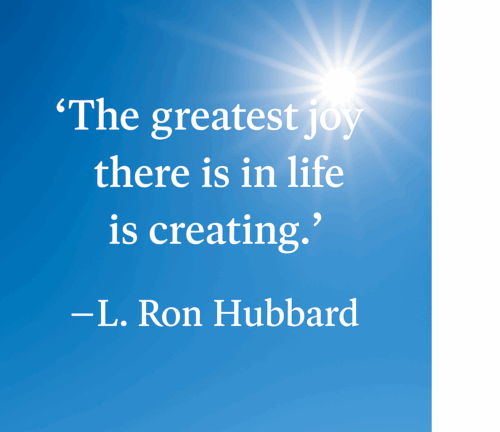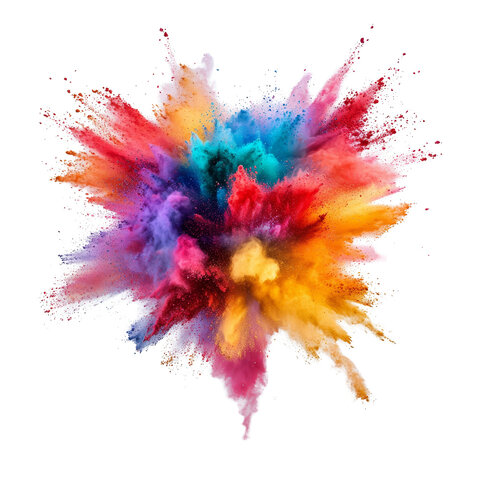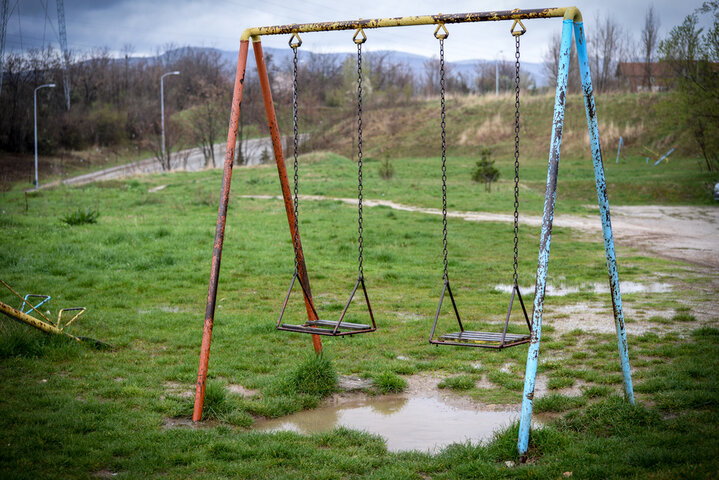How to Create Your Own Success
What motivates you?
Love? Money? Happiness? Peace? Glory?
Yes—but what’s behind all of these? What is your deepest source of motivation and power?
The answer might surprise you.
Creating!
“The Dynamic Principle of Existence is creating.” — L. Ron Hubbard
Let’s break that down:
- Dynamic = energy, motion, power
- Principle = a core rule or law
- Existence = being alive
In other words: The driving FORCE of LIFE is CREATING.
You can use this discovery to create your own success.
How to Create Your Own Success
What motivates you?
Love? Money? Happiness? Peace? Glory?
Yes—but what’s behind all of these? What is your deepest source of motivation and power?
The answer might surprise you.
Creating!
“The Dynamic Principle of Existence is creating.” — L. Ron Hubbard
Let’s break that down:
- Dynamic = energy, motion, power
- Principle = a core rule or law
- Existence = being alive
In other words: The driving FORCE of LIFE is CREATING.
You can use this discovery to create your own success.
How Creative are You?
You might think:
- “I’m not an artist. This doesn’t apply to me.”
- “I tried creating a business once. It was a waste of time.”
- “I don’t have time to be creative.”
But the truth is, you don’t need to be an artist or inventor. You already create—every word you speak, every plan you make, every path you take.
You can create:
- Solutions
- Joyful experiences
- Strong relationships
- A healthier body
- A better future
As a result, you enjoy a happier life.
What Happens If You Stop Creating?
“A person who no longer creates, will have problems.” — L. Ron Hubbard
Here are a few problems you might face when you stop creating:
- Boredom – Life feels flat or meaningless.
- Low self-esteem – You stop proving your value to yourself.
- Stagnation – Without new challenges, your life stalls.
- Unhealthy habits – You may turn to distractions instead of creation.
- Relationship problems – Relationships fade if not actively created.
- Lack of progress – You stop growing personally and professionally.
- Irrelevance – Others pass you by because you’re not contributing.
- Fear – Your mind creates anxiety, stress and terror without your permission.
- Missed opportunities – You don’t spot great choices that are right in front of you.
Marriage problems occur when the spouses stop creating the marriage. When it is constantly created, the marriage thrives.
When the people in a business do not create that business, it dies. For example, Kodak could have dominated the digital camera industry, but its leaders were not creating the company and refused to change. So Kodak went from a highly-profitable company to a bankrupt company.
Companies like Blockbuster, Radio Shack, Circuit City, Toys-R-Us and others failed because they did not constantly create or innovate. They became stagnant and died.
When the leaders in a business constantly innovate and create, they thrive. For example, Apple, Microsoft and Google never stay the same. They constantly create their operations, their products and their services. They make themselves more useful and more valuable.
If you stop creating your life, your progress stops.
Creating Brings Success
What do the most successful people in history have in common?
They created.
- Michelangelo created masterpieces
- Thomas Edison created the lightbulb
- Henry Ford created the auto industry
- Oprah Winfrey created a media empire
- Steve Jobs created the iPhone
Success follows creation.
YOU can be just as creative!
12 Examples
- Entrepreneurs create jobs and opportunities
- Entertainers create memorable experiences
- Leaders create visions that others follow
- Teachers create understanding and inspiration
- Spouses and parents create loving environments
- Writers create stories and lessons (you’re reading one now!)
- Athletes and gamers create winning strategies
- Designers create beauty and functionality
- Scientists create breakthroughs
- Chefs create nourishment and delight
- Managers create skilled teams and exciting production games
- Programmers create the tools that run the world
Five Exercises to Build Your Creative Muscle
- Use Your Imagination
Picture yourself as a highly creative person. Imagine yourself inventing something new, building a successful business or creating an exciting event. - List Your Wins
Make a list of things you’ve created—projects, solutions, improvements and so on. Keep adding to the list. Read the list whenever you need inspiration. As you create new things, add them to the list. - Create Something New Right Now
Set a timer for 10 minutes and go for it! Write a story, invent a side business name, reorganize your desk, make a new type of snack, do a task in a new way, draw a beautiful doodle, anything at all. It doesn’t need to be perfect, just creative. - Find Some Inspiration
Pick a creation that is amazing to you. Use it as a model or inspiration to create something of your own. Ask yourself, “How can I start with this and create something better?” “Can I use this incredible idea in my own work?” “How could I combine this brilliant creation with this other brilliant creation?” - Constantly Think About Creating
When you wake up, think “What can I create today?”
When a problem is stopping you, ask yourself, “How can I put more creative energy into this situation?”
When you think about your future, add “What will be my greatest creations?”
Seven Action Steps: How to Create Your Success
- Solve problems creatively.
Pick a problem and ask yourself, “How can I solve this by being more creative?” “How else?” “How else?” Keep going until you discover something that works.
Example: A neighbor sits on his porch each morning playing loud music. It drives you crazy. You think it over and create a few new solutions to try. So the next morning, instead of reacting, you smile, you wave—or offer some fresh cookies. - Break bad habits by out-creating them.
Example: You want to stop smoking but the urges control you. So you create replacements like deep breathing, moving your body around as fast as possible or making someone laugh. - Raise your pay by creating improved performance.
For example, invent more efficient ways to do your tasks, create a better service or product, or find new ways to accomplish more in less time. - Strengthen your relationships by constantly creating them.
For example, create fun activities, make time for more communication or set some exciting goals. - Improve your health with new creative habits.
For example, make healthier meals, find a better sleep system and make exercise more enjoyable. - Handle negative emotions–like fear, anger or depression–by creating positive experiences.
For example, you’re afraid to fly, so you create a wonderful experience by bringing your favorite snacks, a terrific book, a movie and a new playlist of music you love. Flying is now a joy.
Or one of your coworkers makes you angry with his daily political rants. You create positive conversations by changing the subject to things you both love, such as cars, hiking or a mutual friend. Your anger is gone. - Create your life every day.
For example, upgrade your spaces, reorganize your schedule, master new valuable skills—even upgrade your personality.
Top 10 Benefits of Creating
When you create regularly, you:
- Feel more alive and energized
- Experience more joy and purpose
- Build confidence
- Stay mentally sharp
- Improve your relationships
- Make real progress
- See more opportunities
- Stay relevant and growing
- Avoid boredom and regret
- Attract other creative people
 Best of all, creating brings you joy.
Best of all, creating brings you joy.
It can pull you out of sadness, confusion, or even depression.
The more you create, the greater your joy.
Bottom Line: Creating is Power
If you want a better life,
If you want to feel more alive,
If you want to rise above your problems…
Create. Create. Create.
Read more: The Joy of Creating in “How to Make Yourself Happier.”




